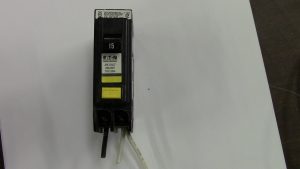13 Steven Lazarou
F2 -Timeline experiment
“In the discovery of secret things and in the investigation of hidden causes, stronger reasons are obtained from sure experiments and demonstrated arguments than from probable conjectures and the opinions of philosophical speculators of the common sort.” William Gilbert
Learning Objectives – Intent of Timeline Experiment
- Experiment with the timeline feature to see if it can be used both in a linear and unrestricted way.
Rational of Timeline experiment – Conveying a story or message may not always happen linearly. One example of this is the movie trilogy – Back to the Future where Marty and Doc travel from the present to the past, to the present and to the future.
Timeline experiment results – I entered the dates as they occurred in the movie: 1985, 1955, 1985, 2015. The Timeline feature automatically sorted the dates in a chronological linear order. The timeline feature is still a very useful tool in conveying a story or message to a student through both images and texts. In this particular scenario this timeline is not as UDL friendly because it may cause confusion as to when the events took place. Perhaps the developers of Timeline (Knight Lab) will provide an option for timelines to go back to the future.
References:
Back to the Future timeline https://backtothefuture.fandom.com/wiki/Back_to_the_Future_timeline Retrieved November 27, 2019
Timeline/H5P https://h5p.org/timelineRetrieved November 27, 2019
Leung, J. (Photographer). (2018) Selective focus photography of silver car Retrieved from
https://unsplash.com/photos/Qg_gUciqwmU
F3 Levelling up Experiment
Electricians – Early adopters of Artificial Intelligence (AI) technology
Before we get too far, I want to give my simple definition of AI. The ability for a machine to sense an event or change in the environment and respond to it… Are there other definitions, sure… but this one makes sense to me.

Combination Type Arc Fault Circuit Breaker Learning Objectives
- Differentiate between two types of Arcing Faults and how they are caused
- Explain ways to prevent Arc Faults from occurring
- Interpret the function of a Combination type arc fault circuit breaker
This lesson will explore the function of the Combination Type Arc Fault Circuit Breaker (AFCI). An AFCI has the same characteristics of a regular breaker (a breaker that trips upon overload and overcurrent), and the AFCI uses electronics to sense and differentiate between normal circuit operation and series/parallel faults. How does an AFCI do this? Well, it’s not magic, but it is beyond the scope of this lesson. If you would like to learn how an AFCI senses series and parallel faults read the following article: https://www.elprocus.com/afci-arc-fault-circuit-interrupter-working-principle/
Purpose: The Ontario Electrical Safety Code Rule 26-656 requires Arc fault protection of branch circuits for dwelling units supplying 120 V receptacles rated 20 A or less shall be protected by a combination-type arc-fault circuit interrupter.2
Rationale: During the development of the Arc-Fault Circuit Interrupter (AFCI) requirements for the 2015 CE code, Dr. Joel Moody of the Ontario’s Electrical Safety Authority analyzed the Ontario Office of the Fire Marshall’s (OFM) data for losses from fires where the fuel of the ignition source was reported as electricity for single residential dwellings from 2000 to 2011. The OFM data indicated 11 different ignition sources within the electrical system that caused the fires. The data also suggests that the risk of fire by six of the ignition sources listed may have been reduced or eliminated by employing AFCI protection.3
Please view the following interactive video and complete the activities. 2M 49S
References:
- Arc-Fault Circuit Interrupters (AFCI) and its functions https://www.elprocus.com/afci-arc-fault-circuit-interrupter-working-principle/ Retrieved November 27, 2019
2. CSA Group. (2018). Ontario electrical safety code: consisting of CSA C22.1-18, Canadian Electrical Code, Part I, Safety standard for electrical installations (Twenty-fourth edition) and Ontario Amendments to CSA C22.1-18, Canadian Electrical Code, Part I (Twenty-seventh edition). Toronto, Ontario.
3. Electrical Safety Authority – The OESC 27th Edition Proposals for Ontario Amendments https://www.esasafe.com/assets/files/esasafe/pdf/amendments/2019/2018-OA-022%20Rule%2026-656%20Electro%20Federation%20Canada.PDF Retrieved November 27, 2019

